Jon H. Alvarez
B.Arch. '77

Jon H. Alvarez.
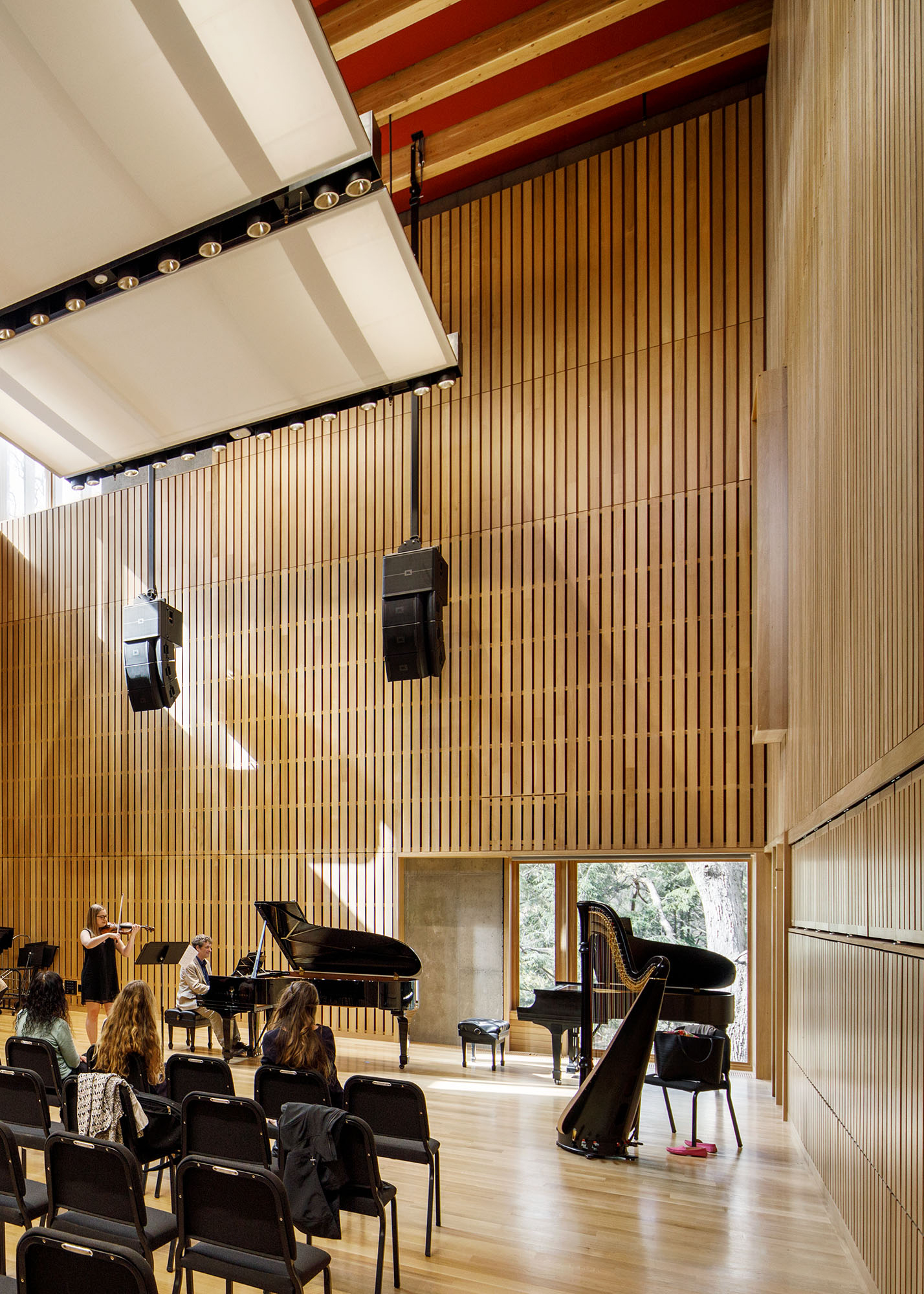
Wellesley College Pendleton Hall West (2017), acoustical wall system in rehearsal hall, Wellesley, Massachusetts. Michael Moran / OTTO
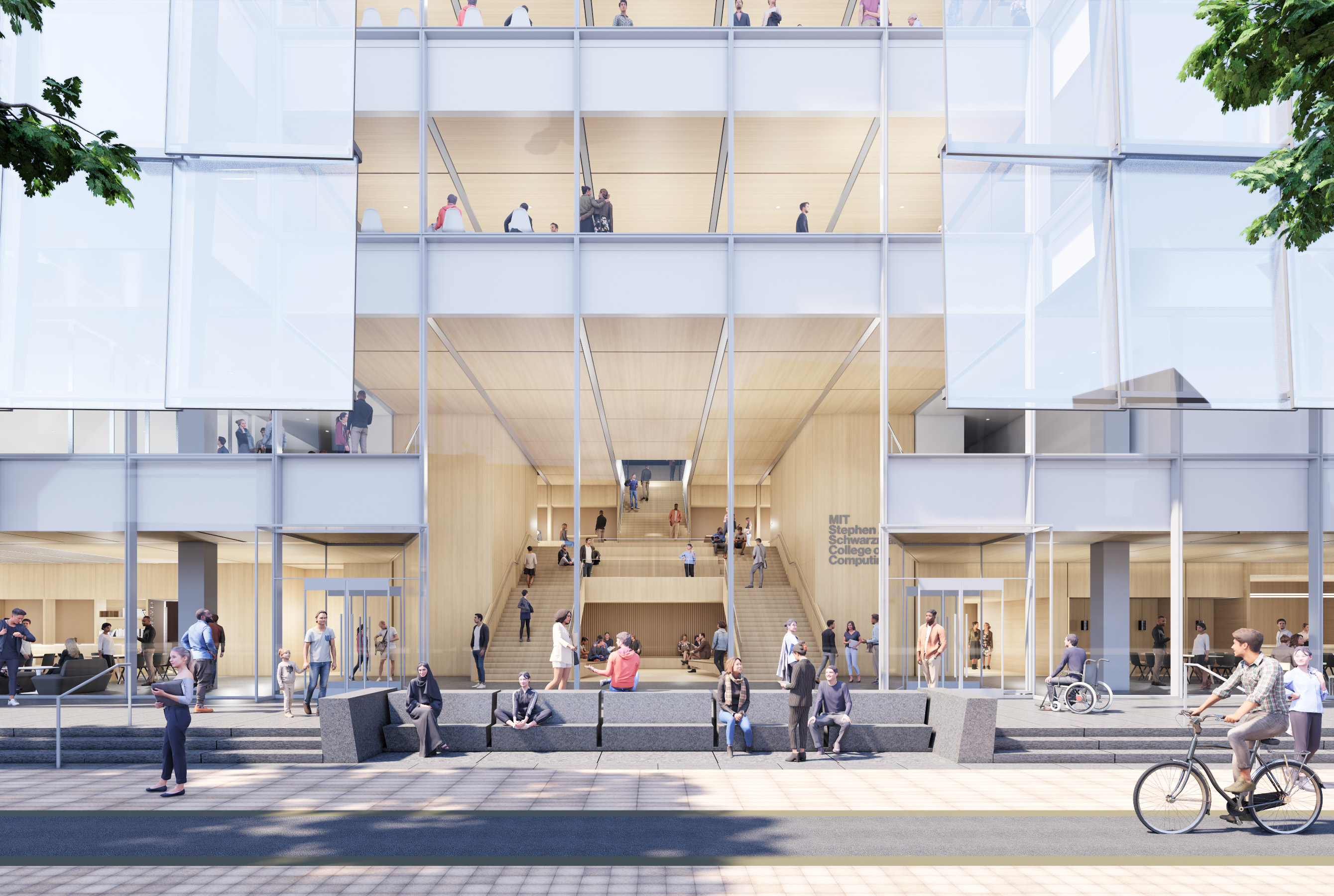
MIT Stephen A. Schwarzman College of Computing (2023), Building 45 center facade rendering, Cambridge, Massachusetts. Rendering by SOM, courtesy of MIT.

Yale University Maurice R. Greenberg Conference Center (2009), New Haven, Connecticut. Peter Aaron / OTTO
Projects
Yale University Maurice R. Greenberg Conference Center (2009)
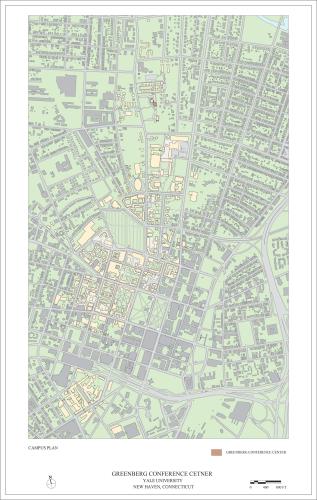
Robert A.M. Stern Architects (architect), campus plan, Yale University, New Haven, Connecticut.

Robert A.M. Stern Architects (architect), site plan, Yale University, New Haven, Connecticut.
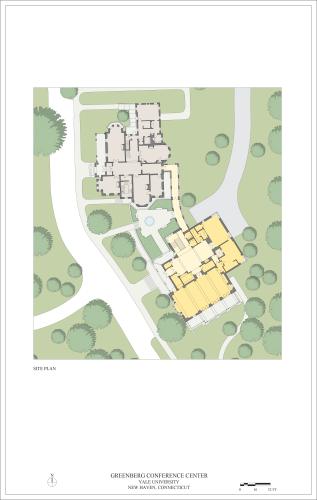
Robert A.M. Stern Architects (architect), site plan, Yale University, New Haven, Connecticut.
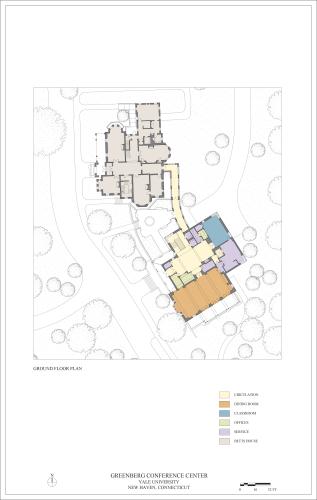
Robert A.M. Stern Architects (architect), ground floor plan, Yale University, New Haven, Connecticut.
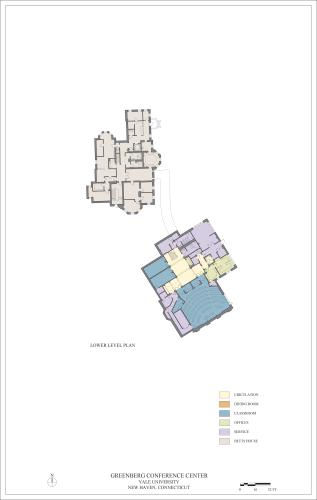
Robert A.M. Stern Architects (architect), lower level plan, Yale University, New Haven, Connecticut.
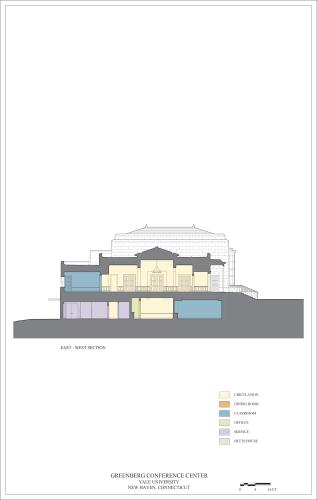
Robert A.M. Stern Architects (architect), east-west section, Yale University, New Haven, Connecticut.
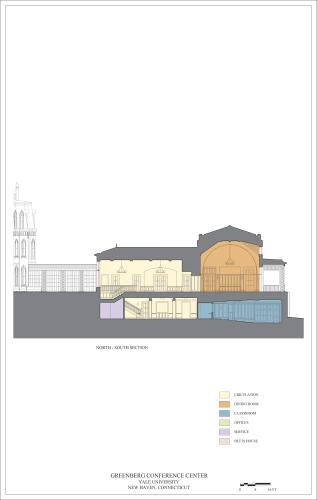
Robert A.M. Stern Architects (architect), north-south section, Yale University, New Haven, Connecticut.
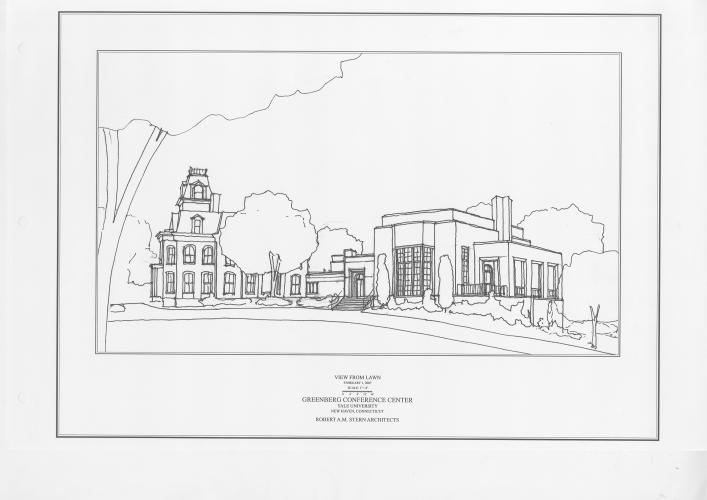
Robert A.M. Stern Architects (architect), sketch of view from lawn by Jeffery Povero, Yale University, New Haven, Connecticut.

Robert A.M. Stern Architects (architect), rendering of view from southwest by Thomas Schaller, Yale University, New Haven, Connecticut.

Robert A.M. Stern Architects (architect), aerial view of model, Yale University, New Haven, Connecticut.
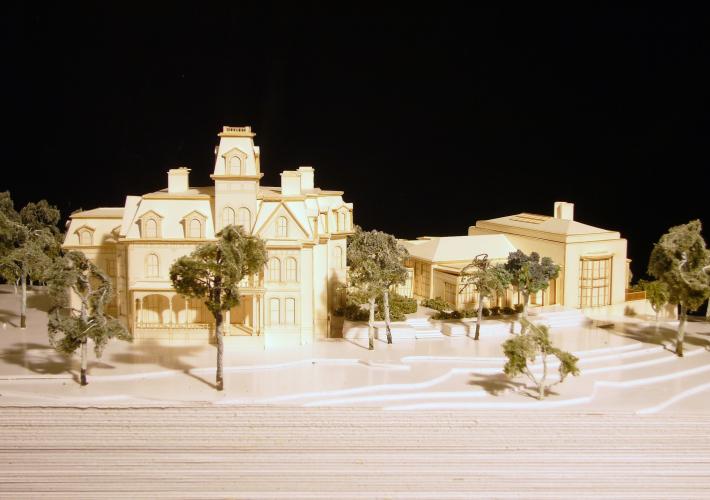
Robert A.M. Stern Architects (architect), aerial view of model, Yale University, New Haven, Connecticut.
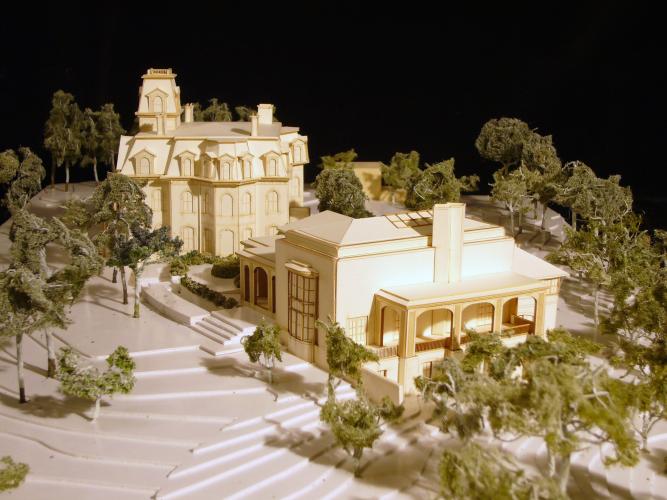
Robert A.M. Stern Architects (architect), aerial view of model, Yale University, New Haven, Connecticut.
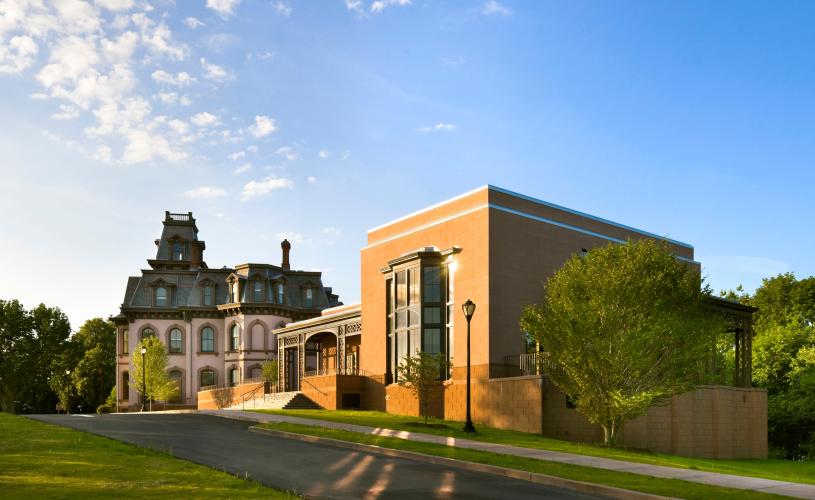
Robert A.M. Stern Architects (architect), exterior view from southwest, 14,000 square feet, Yale University, New Haven, Connecticut. Peter Aaron / OTTO

Robert A.M. Stern Architects (architect), west facade, 14,000 square feet, Yale University, New Haven, Connecticut. Peter Aaron / OTTO
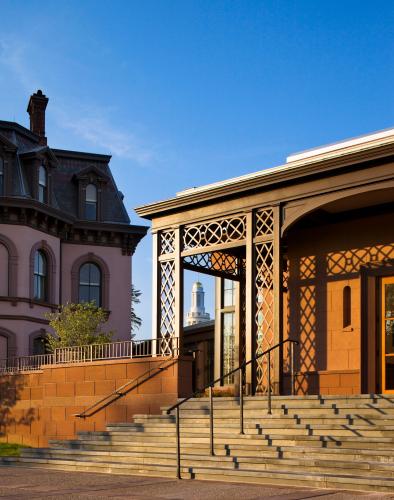
Robert A.M. Stern Architects (architect), entry, 14,000 square feet, Yale University, New Haven, Connecticut. Peter Aaron / OTTO
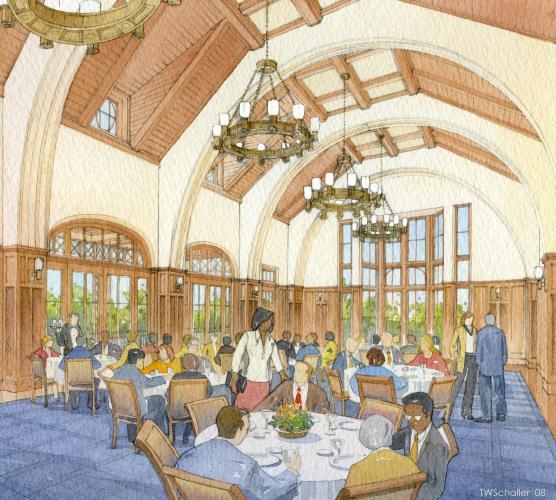
Robert A.M. Stern Architects (architect), rendering of dining hall by Thomas Schaller, Yale University, New Haven, Connecticut.
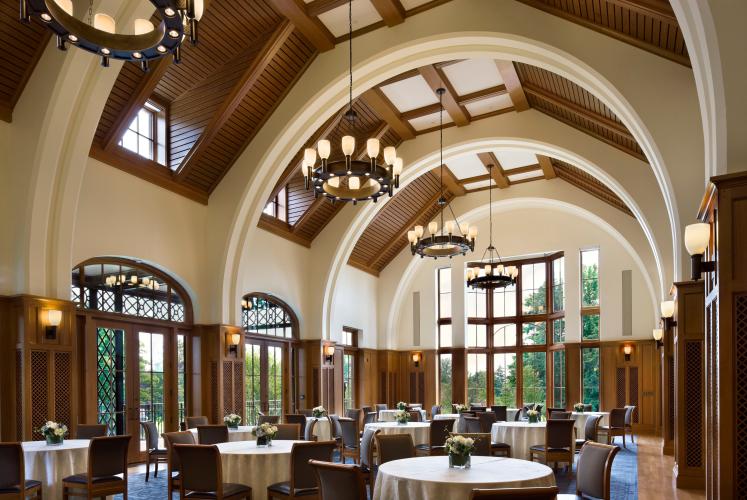
Robert A.M. Stern Architects (architect), dining hall, Yale University, New Haven, Connecticut. Peter Aaron / OTTO

Robert A.M. Stern Architects (architect), entry lobby, Yale University, New Haven, Connecticut. Peter Aaron / OTTO
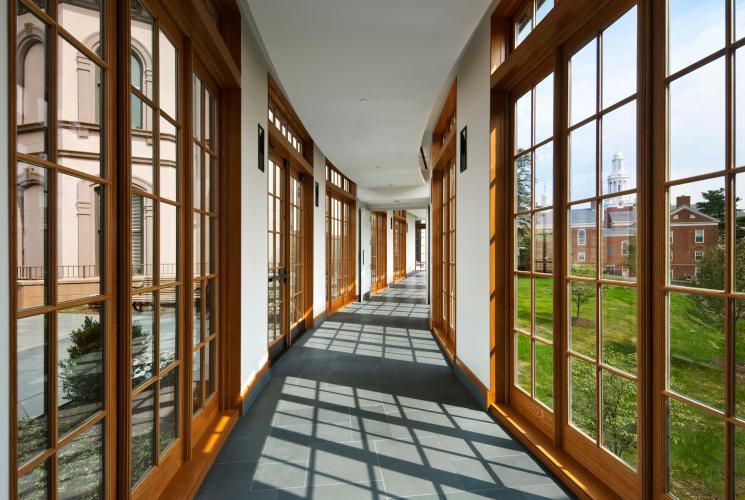
Robert A.M. Stern Architects (architect), arcade connecting the center to the historic Betts House, Yale University, New Haven, Connecticut. Peter Aaron / OTTO

Robert A.M. Stern Architects (architect), auditorium, Yale University, New Haven, Connecticut. Peter Aaron / OTTO
Wellesley College Pendleton Hall West Renovation & Addition (2017)

Kieran Timberlake (architect), aerial view, 58,000 square feet (48,000 renovation; 10,000 addition), Wellesley College, Wellesley, Massachusetts. Michael Moran / OTTO

Kieran Timberlake (architect), exterior view, 58,000 square feet (48,000 renovation; 10,000 addition), Wellesley College, Wellesley, Massachusetts. Michael Moran / OTTO

Kieran Timberlake (architect), concrete and wood exterior, 58,000 square feet (48,000 renovation; 10,000 addition), Wellesley College, Wellesley, Massachusetts. Michael Moran / OTTO
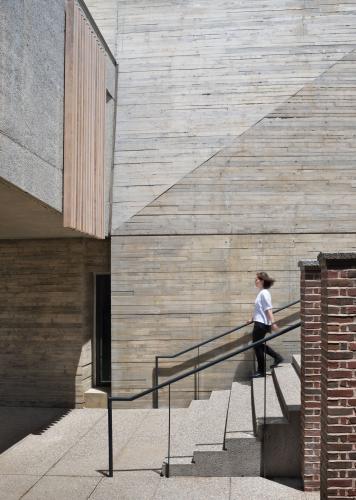
Kieran Timberlake (architect), Arts Passage connecting the addition and Jewett Art Center, 58,000 square feet (48,000 renovation; 10,000 addition), Wellesley College, Wellesley, Massachusetts. Michael Moran / OTTO
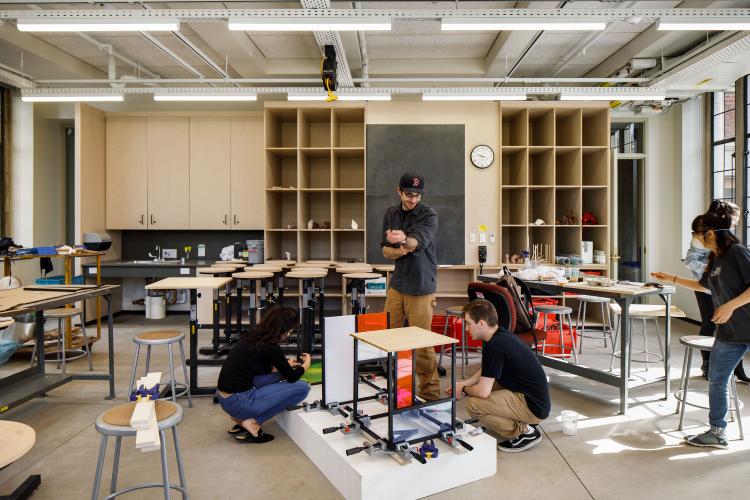
Kieran Timberlake (architect), art studio, 58,000 square feet (48,000 renovation; 10,000 addition), Wellesley College, Wellesley, Massachusetts. Michael Moran / OTTO
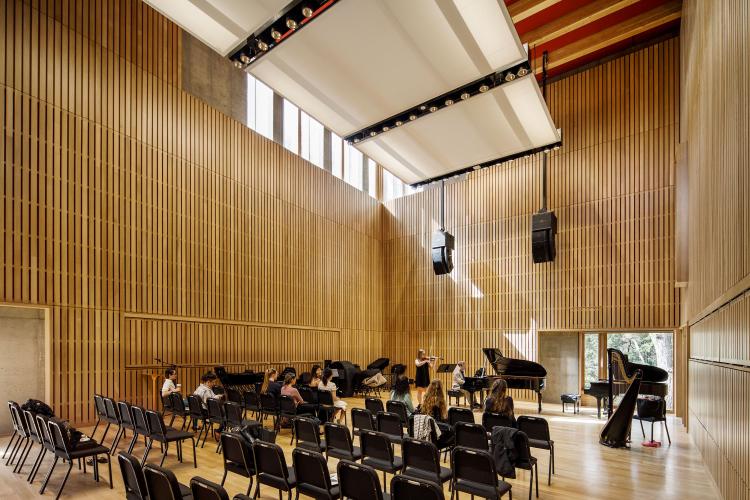
Kieran Timberlake (architect), rehearsal hall with wood acoustical wall system, 58,000 square feet (48,000 renovation; 10,000 addition), Wellesley College, Wellesley, Massachusetts. Michael Moran / OTTO
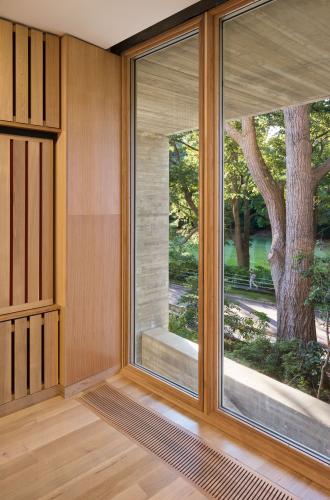
Kieran Timberlake (architect), windows in the oak-lined rehearsal hall, 58,000 square feet (48,000 renovation; 10,000 addition), Wellesley College, Wellesley, Massachusetts. Michael Moran / OTTO
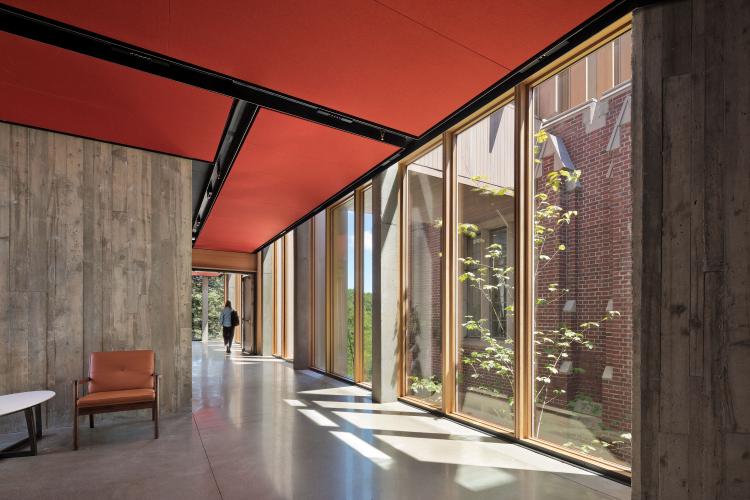
Kieran Timberlake (architect), passageway with red fabric acoustic ceiling, 58,000 square feet (48,000 renovation; 10,000 addition), Wellesley College, Wellesley, Massachusetts. Michael Moran / OTTO
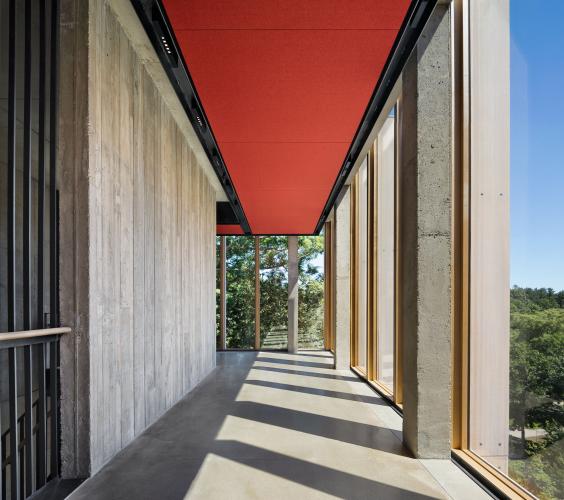
Kieran Timberlake (architect), passageway with red fabric acoustic ceiling, 58,000 square feet (48,000 renovation; 10,000 addition), Wellesley College, Wellesley, Massachusetts. Michael Moran / OTTO
Wellesley College Global Flora Conservatory (2019)
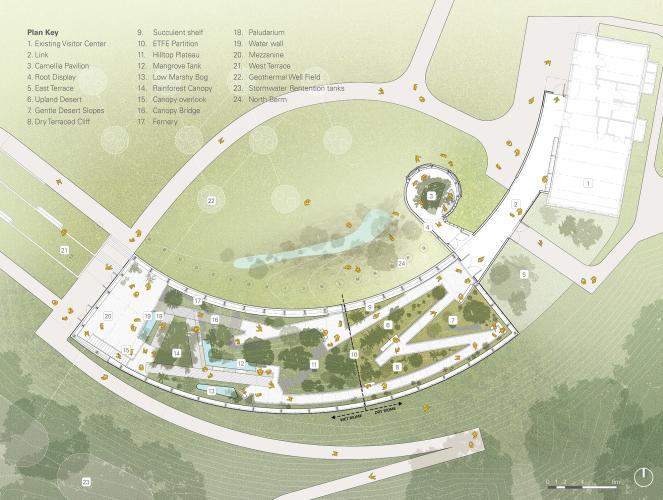
Kennedy & Violich Architecture (architect), ground floor plan, 7,500-square-foot building, Wellesley College, Wellesley, Massachusetts.
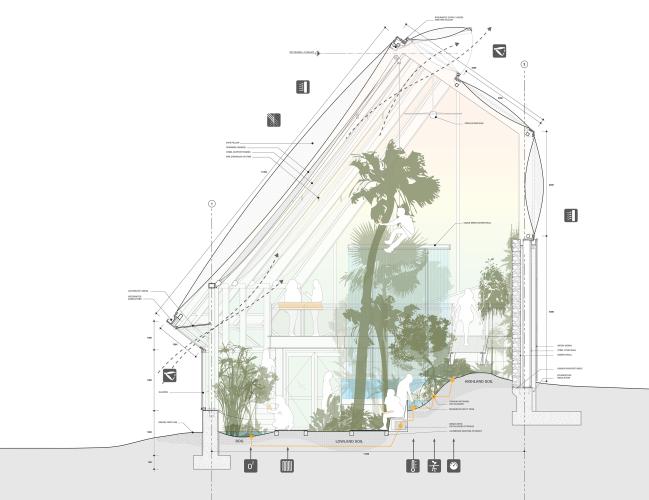
Kennedy & Violich Architecture (architect), section looking west, 7,500-square-foot building, Wellesley College, Wellesley, Massachusetts, photo courtesy of Kennedy & Violich Architecture, Ltd.
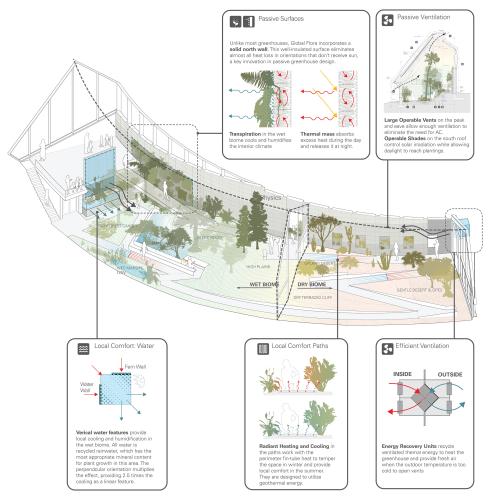
Kennedy & Violich Architecture (architect), axonometric diagram showing sustainability features, 7,500-square-foot building, Wellesley College, Wellesley, Massachusetts, photo courtesy of Kennedy & Violich Architecture, Ltd.
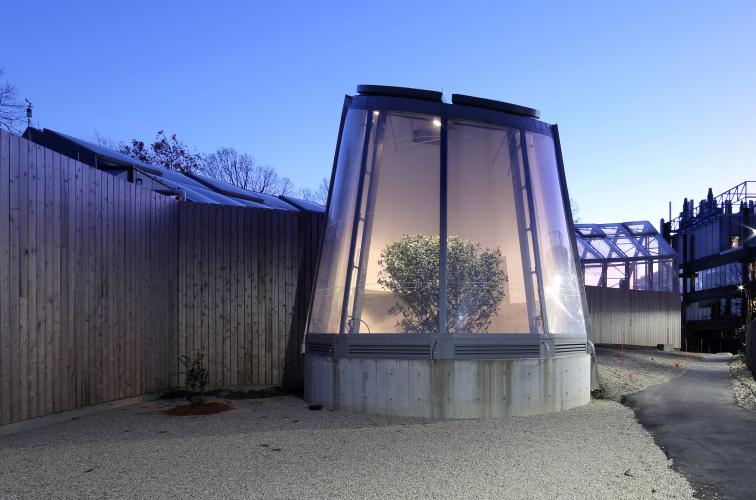
Kennedy & Violich Architecture (architect), pavilion exterior at dusk, 7,500-square-foot building, Wellesley College, Wellesley, Massachusetts, courtesy of Kennedy & Violich Architecture, Ltd.

Kennedy & Violich Architecture (architect), exterior view from southeast, 7,500-square-foot building, Wellesley College, Wellesley, Massachusetts, courtesy of Kennedy & Violich Architecture, Ltd.
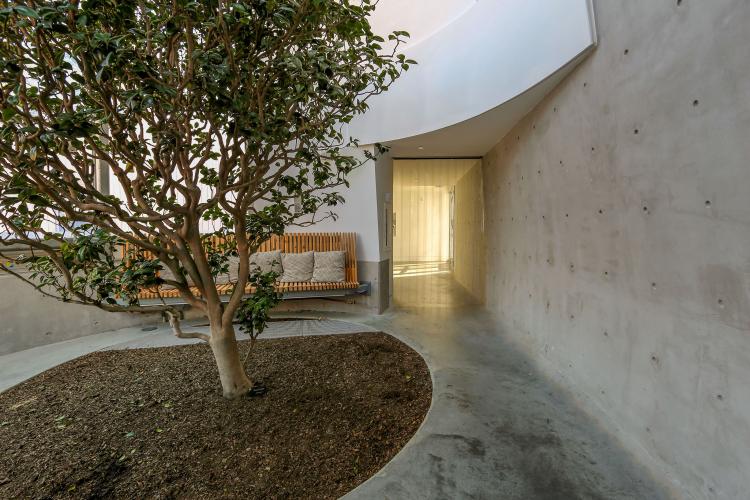
Kennedy & Violich Architecture (architect), Camellia Pavilion interior, 7,500-square-foot building, Wellesley College, Wellesley, Massachusetts, photo courtesy of Kennedy & Violich Architecture, Ltd.

Kennedy & Violich Architecture (architect), greenhouse interior, mangrove tank, 7,500-square-foot building, Wellesley College, Wellesley, Massachusetts, photo courtesy of Kennedy & Violich Architecture, Ltd.

Kennedy & Violich Architecture (architect), greenhouse interior, wet biome, 7,500-square-foot building, Wellesley College, Wellesley, Massachusetts, photo courtesy of Kennedy & Violich Architecture, Ltd.

Kennedy & Violich Architecture (architect), greenhouse interior, wet biome, 7,500-square-foot building, Wellesley College, Wellesley, Massachusetts, photo courtesy of Kennedy & Violich Architecture, Ltd.

Kennedy & Violich Architecture (architect), view of wet biome from mezzanine, 7,500-square-foot building, Wellesley College, Wellesley, Massachusetts, photo courtesy of Kennedy & Violich Architecture, Ltd.
Wellesley College Science Complex (2022)

Skidmore, Owings & Merrill (architect), aerial view rendering, 97,000 square feet, Wellesley College, Wellesley, Massachusetts.

Skidmore, Owings & Merrill (architect), drop-off, 97,000 square feet, Wellesley College, Wellesley, Massachusetts.
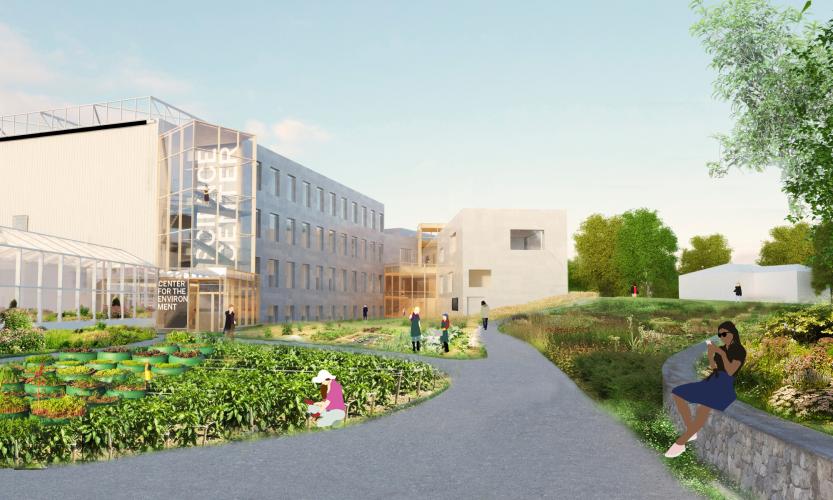
Skidmore, Owings & Merrill (architect), rendering of view from behind the Science Center includes the Camilla Chandler Frost '47 Center for the Environment, the Chao Innovation Hub, and new greenhouses, 97,000 square feet, Wellesley College, Wellesley, Massachusetts.
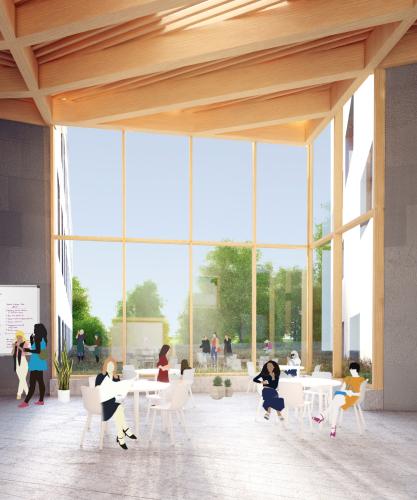
Skidmore, Owings & Merrill (architect), T.T. and W.F. Chao Foundation Innovation Hub rendering, double-height windows overlook the Edible Ecosystem, 97,000 square feet, Wellesley College, Wellesley, Massachusetts.
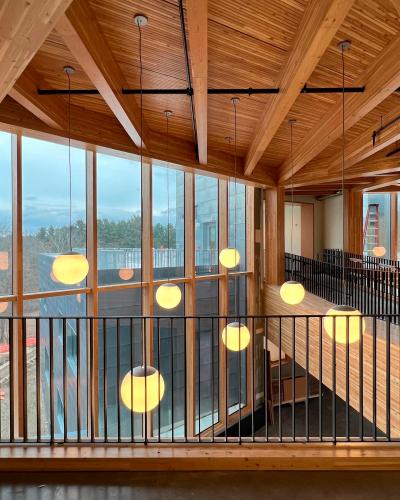
Skidmore, Owings & Merrill (architect), laminated timber structure in Chao Foundation Innovation Hub, 97,000 square feet, Wellesley College, Wellesley, Massachusetts.

Skidmore, Owings & Merrill (architect), construction of Chao Foundation Innovation Hub, 97,000 square feet, Wellesley College, Wellesley, Massachusetts.
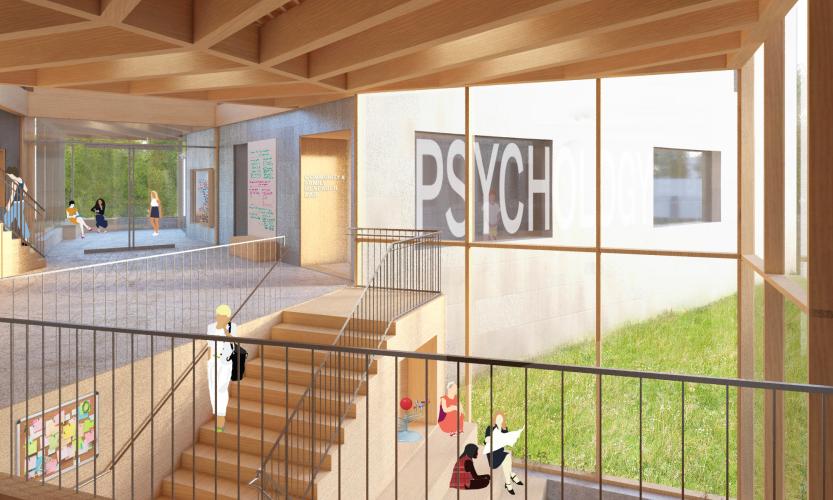
Skidmore, Owings & Merrill (architect), interior rendering, 97,000 square feet, Wellesley College, Wellesley, Massachusetts.

Skidmore, Owings & Merrill (architect), research lab rendering, 97,000 square feet, Wellesley College, Wellesley, Massachusetts.
MIT Stephen A. Schwarzman College of Computing (2023)

Skidmore, Owings & Merrill (architect), Building 45, east approach rendering, 174,000 gross square feet, MIT, Cambridge, Massachusetts. Rendering by SOM, courtesy of MIT.
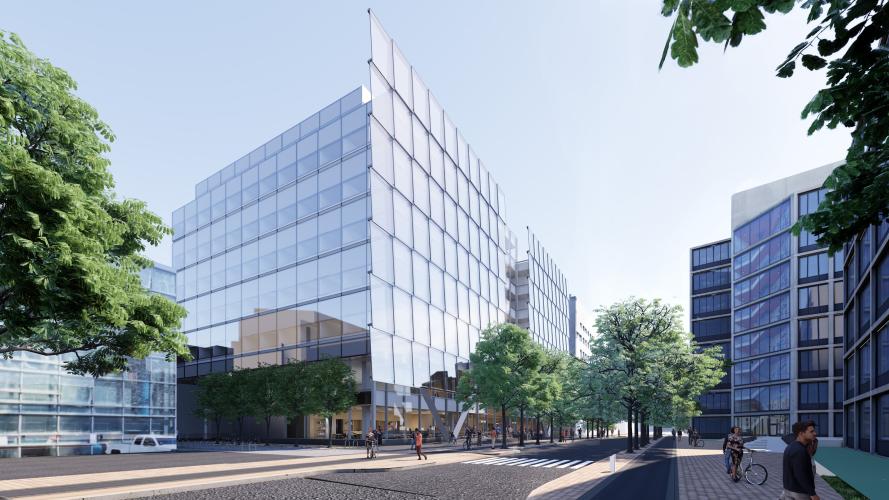
Skidmore, Owings & Merrill (architect), Building 45, west approach rendering, 174,000 gross square feet, MIT, Cambridge, Massachusetts. Rendering by SOM, courtesy of MIT.

Skidmore, Owings & Merrill (architect), Building 45, south building elevation plan, 174,000 gross square feet, MIT, Cambridge, Massachusetts. Rendering by SOM, courtesy of MIT.
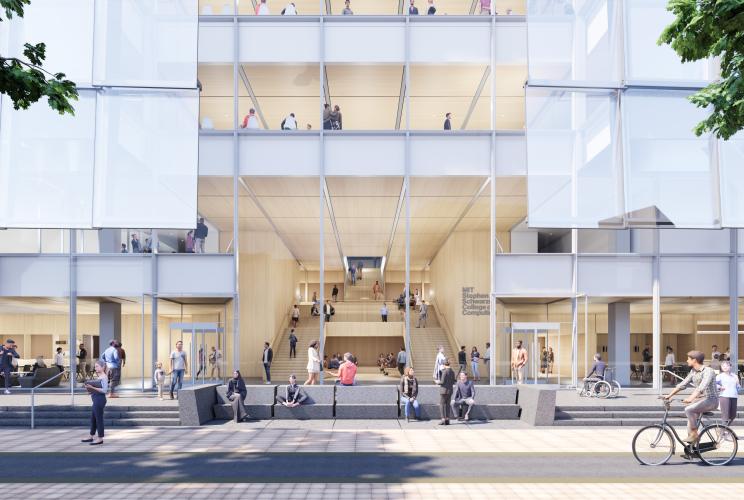
Skidmore, Owings & Merrill (architect), Building 45, center facade rendering, 174,000 gross square feet, MIT, Cambridge, Massachusetts. Rendering by SOM, courtesy of MIT.
Color: Lorem ipsum dolor sit amet, consectetur adipisicing elit. Distinctio, eveniet?
